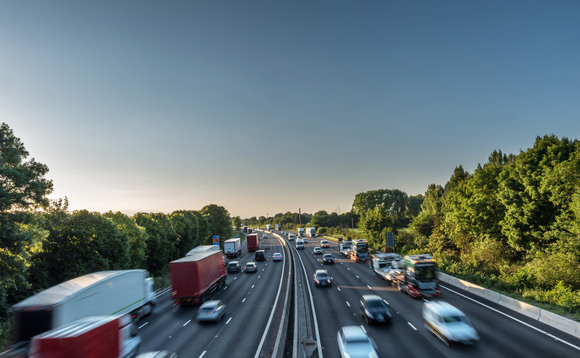
New report from RAC warns government is falling short of its ambitions to provide rapid and ultra-rapid EV charging points across the motorway network by year end
Automotive services giant the RAC has warned the government looks unlikely to meet its target of having six or more rapid or ultra-rapid vehicle chargers at every motorway service station area in England by the end of 2023.
Just 23 per cent of 119 motorway services reviewed by the RAC on Zapmap currently have the target number of chargers, which are facing increased demand from the UK's estimated 760,000 battery electric vehicles (EVs).
According to the RAC's research, released late last week, there are around 400 high-powered charging units situated at motorway services which have the capacity to charge up to 682 electric cars (EVs) at one time.
However, RAC said this means there is currently an average of just over three rapid or ultra-rapid chargers available at motorway services across England.
When examining the number of connectors which these devices have, RAC found that there is an average of nearly four - or 3.8 - of the most commonly used Combined Charging System connectors, as well as just under two CHadeMO connectors which it said are predominantly used by drivers of the Nissan Leaf.
The RAC's research revealed six motorway services in England still have no high-powered chargers. Leicester Forest on both sides of the M1, Tebay South on the M6, Carlisle Northbound on the M1, Strensham Southbound on the M5, and Barton Park on the A1, all currently lack fast chargers, according to the analysis.
When the government published its Electric Vehicle Infrastructure Strategy, it revealed its intention to accelerate the rollout of high-powered chargers on the strategic road network through the £950m Rapid Charging Fund, which it said would help give EV drivers the confidence to drive longer journeys.
In the strategy the government states: "We will ensure that every motorway service area has at least six rapid chargers by the end of 2023, with some having more than 12."
However, according to RAC there are currently only six services in England which have more than 12 rapid chargers located at Exeter on the M5, Rugby on the M6, Reading East and West on the M4, Thurrock on the M25, and Wetherby on the A1.
The government document also states that rapid charge points, which can add around 100 miles of range in around 30 minutes, are already widely available along England's motorways and major A roads and that drivers are never more than 25 miles away from a rapid charge point.
"Many operators of motorway service areas have embraced the ambition to install six high powered chargers by the end of 2023," the government says in its EV strategy. "Over 70 per cent of England's motorway service areas now have a plan to deliver this, and we will continue to work with site operators to ensure that every site is reached."
But critics maintain a significant increase in rapid chargers is required across the motorway network, warning the current level of infrastructure provision is risks bottlenecks and long queues that could slow the adoption of EVs.
The latest charging statistics from Zapmap show that the UK has 42,566 charging devices of which a fifth - or 7,928 - are rapid or ultra-rapid. When coupled with the RAC's research the result shows that just five per cent of all these high powered chargers are at motorway services.
The government has previously said it expects there to be around 300,000 public chargers of all speeds as a minimum by 2030 and more than 6,000 high powered chargers along strategic roads by 2035.
According to the Competition and Market's Authority the UK will need between 280,000 and 480,000 public charge points by 2030 to meet soaring demand for charging as EVs come to dominate the national fleet.
"Our findings show there is much work to be done before the end of the year if the government's target of having six high-powered chargers at every motorway service area is to be met," said RAC EV spokesperson Simon Williams.
"Installing these types of units is not straightforward as connecting to the electricity grid is expensive and time-consuming, but clearly more needs to be done to make this process simpler than it is currently. While we understand the government is taking steps to expedite matters, the importance of ensuring sufficient high-powered charging is readily available up and down our motorway network can't be emphasised enough."
Williams warned that a lack of charging facilities is rapidly becoming one of the most widely quoted reasons for drivers not going electric.
"With approaching 1m battery electric vehicles on the road and the government having a goal of 80 per cent of new cars sold by 2030 being zero-emission, it's critical that the country's charging network grows proportionately, particularly at the fastest end of the charging spectrum," he added.
"While 97 per cent of motorways service areas already have charging available, industry has plans to install many hundreds more chargepoints in the coming months," said a spokesperson for the Department for Transport. "We've put more than £2bn into accelerating the transition to electric vehicles, and our Rapid Charging Fund will further boost charging to support long distance journeys, including at motorway services."
The report also comes in the same week as the National Highways agency published a new strategy confirming plans to install 2,500 new chargers across the motorway and A-road network over the next five years.